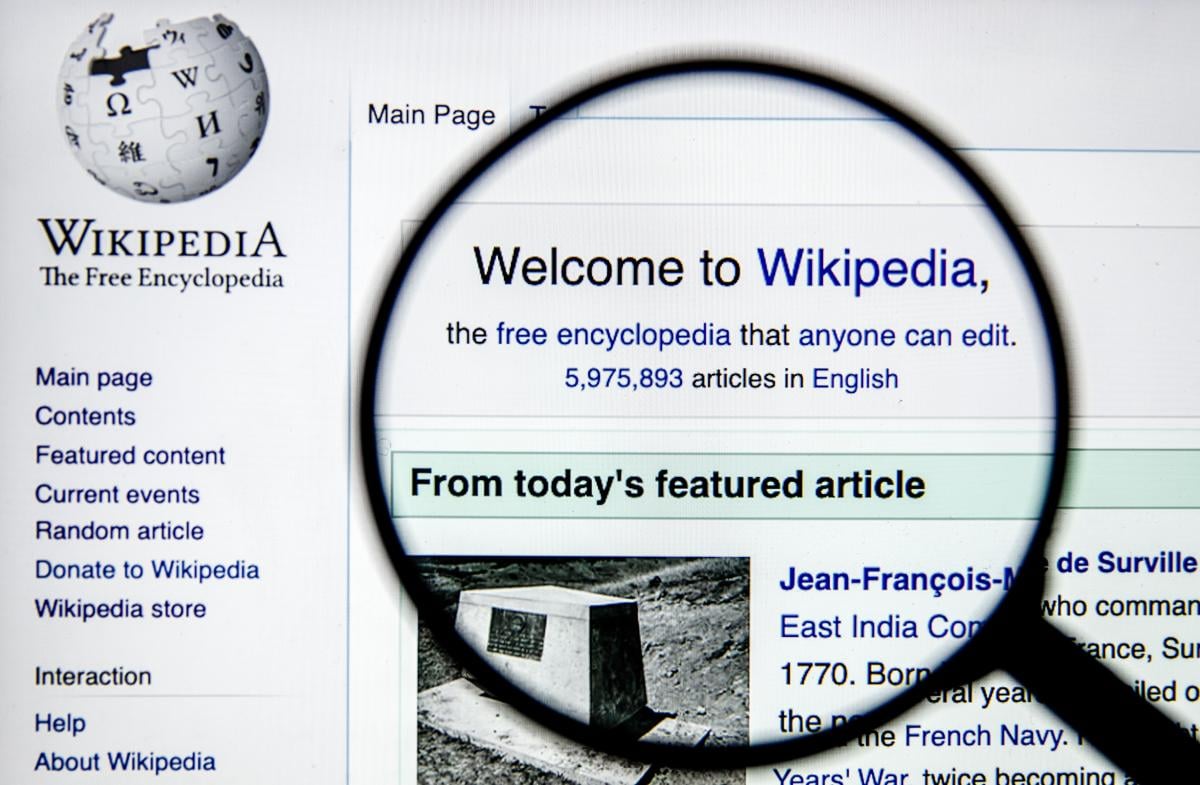What is Wikipedia Worth to the World?
Wikipedia, the world’s largest online encyclopedia, has become an indispensable resource for knowledge sharing, education, and research. With over 50 million articles in hundreds of languages, it has revolutionized the way we access and share information. But have you ever wondered, how much is Wikipedia worth? The answer is not straightforward, as its value extends far beyond its financial worth. Wikipedia’s impact on society, education, and research is immeasurable, making it a priceless asset to humanity.
Wikipedia’s significance can be gauged from its massive user base, with over 1.5 billion unique visitors every month. Its content is used by students, researchers, and professionals alike, making it an essential tool for learning and development. Moreover, Wikipedia’s open-source model has democratized access to knowledge, bridging the gap between developed and developing countries.
However, understanding Wikipedia’s financial worth is crucial for its sustainability and growth. As a non-profit organization, Wikipedia relies on donations and grants to operate. Its financial stability is essential to maintaining its independence and ensuring the continued availability of its vast repository of knowledge.
So, how much is Wikipedia worth? While it’s difficult to assign a monetary value to its impact on society, we can explore its financial worth by examining its assets, revenue streams, and operational costs. In the following sections, we’ll delve into the details of Wikipedia’s business model, its assets, and its financial performance to estimate its worth.
Understanding Wikipedia’s Business Model
Wikipedia’s non-profit business model is a key factor in its ability to provide free access to knowledge. The Wikimedia Foundation, a 501(c)(3) organization, is responsible for managing Wikipedia’s finances and ensuring its long-term sustainability. The foundation relies on donations and grants to cover its operational costs, which include server maintenance, bandwidth, and personnel expenses.
The Wikimedia Foundation’s financial model is designed to ensure Wikipedia’s independence and neutrality. By relying on donations and grants, Wikipedia is not beholden to advertisers or corporate interests, allowing it to maintain its editorial independence and focus on its mission of providing free access to knowledge.
Wikipedia’s financial transparency is also a key aspect of its business model. The Wikimedia Foundation publishes annual financial reports, which provide detailed information on its revenue and expenses. This transparency helps to build trust with donors and stakeholders, and ensures that Wikipedia’s finances are managed in a responsible and accountable manner.
So, how much is Wikipedia worth in terms of its financial sustainability? The answer lies in its ability to balance its revenue and expenses. In 2020, the Wikimedia Foundation reported revenues of $124 million, with expenses totaling $112 million. This surplus allows Wikipedia to invest in its infrastructure and programs, ensuring its continued growth and development.
Wikipedia’s business model is a testament to the power of non-profit organizations in providing essential services to society. By prioritizing its mission over profits, Wikipedia is able to provide a valuable resource to people around the world, while also ensuring its long-term sustainability.
Estimating Wikipedia’s Worth: A Look at its Assets
Wikipedia’s worth can be estimated by examining its various assets, including its vast repository of user-generated content, its brand recognition, and its technological infrastructure. These assets are valuable because they enable Wikipedia to provide a unique and essential service to society.
Wikipedia’s content is its most valuable asset, with over 50 million articles in hundreds of languages. This content is created and maintained by a community of volunteer editors, who contribute their time and expertise to ensure the accuracy and reliability of the information. The value of this content can be estimated by considering the cost of creating and maintaining it, as well as its impact on society.
Wikipedia’s brand recognition is another valuable asset, with the site being one of the most recognized and trusted online brands. This recognition is built on the site’s reputation for providing accurate and unbiased information, as well as its commitment to transparency and accountability. The value of this brand recognition can be estimated by considering the cost of building and maintaining a similar brand, as well as its impact on Wikipedia’s ability to attract and retain users.
Wikipedia’s technological infrastructure is also a valuable asset, with the site relying on a complex network of servers, data centers, and software applications to deliver its content to users. The value of this infrastructure can be estimated by considering the cost of building and maintaining it, as well as its impact on Wikipedia’s ability to provide a fast and reliable service to users.
So, how much is Wikipedia worth in terms of its assets? Estimating the exact value of these assets is difficult, but it is clear that they are worth hundreds of millions of dollars. For example, a study by the Harvard Business Review estimated that Wikipedia’s content is worth over $100 million, while another study by the University of California estimated that the site’s brand recognition is worth over $500 million.
These estimates are rough and based on various assumptions, but they give an idea of the scale of Wikipedia’s assets. By understanding the value of these assets, we can gain a better appreciation of Wikipedia’s worth and its impact on society.
How Much Does it Cost to Run Wikipedia?
Running Wikipedia is a costly endeavor, with expenses ranging from server maintenance to personnel costs. The Wikimedia Foundation, the non-profit organization that operates Wikipedia, reports annual expenses of over $100 million. But where does this money go?
One of the largest expenses for Wikipedia is server maintenance. With over 50 million articles and 1.5 billion unique visitors every month, Wikipedia requires a massive infrastructure to support its operations. This includes a network of servers, data centers, and software applications that must be maintained and upgraded regularly.
Another significant expense for Wikipedia is bandwidth. With millions of users accessing the site every day, Wikipedia requires a significant amount of bandwidth to ensure that its content is delivered quickly and efficiently. This cost is estimated to be in the tens of millions of dollars every year.
Personnel expenses are also a significant cost for Wikipedia. The Wikimedia Foundation employs a team of developers, engineers, and other staff to maintain and improve the site. These costs include salaries, benefits, and other expenses associated with employing a team of professionals.
So, how much is Wikipedia worth in terms of its operational costs? Estimating the exact value of these costs is difficult, but it is clear that they are substantial. By understanding the costs associated with running Wikipedia, we can gain a better appreciation of the site’s financial worth and the importance of supporting its operations.
Wikipedia’s financial sustainability is also an important consideration. The site relies on donations and grants to cover its operational costs, and any shortfall can have a significant impact on its ability to provide a free and reliable service to users. By understanding the costs associated with running Wikipedia, we can better appreciate the importance of supporting its operations and ensuring its long-term sustainability.
Wikipedia’s Revenue Streams: Where Does the Money Come From?
Wikipedia’s revenue streams are a crucial aspect of its financial sustainability. As a non-profit organization, Wikipedia relies on donations and grants to cover its operational costs. But where does the money come from?
Donations are a significant source of revenue for Wikipedia. The site’s annual fundraising campaign, which typically takes place in December, raises millions of dollars from individual donors. These donations are crucial in supporting Wikipedia’s operations and ensuring its continued availability as a free resource.
Grants are another important revenue stream for Wikipedia. The Wikimedia Foundation, the non-profit organization that operates Wikipedia, receives grants from various organizations and institutions to support specific projects and initiatives. These grants can be used to fund new initiatives, improve existing infrastructure, and support the development of new features and tools.
Merchandise sales are also a revenue stream for Wikipedia. The site sells a range of merchandise, including t-shirts, mugs, and other items, with the Wikipedia logo or branding. These sales help to raise additional funds for the site and support its operations.
So, how much is Wikipedia worth in terms of its revenue streams? Estimating the exact value of these revenue streams is difficult, but it is clear that they are substantial. In 2020, the Wikimedia Foundation reported revenues of over $124 million, with donations and grants making up the majority of this amount.
Wikipedia’s revenue streams are a testament to the site’s financial sustainability and its ability to support its operations without relying on advertising or other forms of revenue. By understanding where the money comes from, we can gain a better appreciation of Wikipedia’s worth and its importance as a free and reliable resource.
Valuing Wikipedia: Expert Estimates and Comparisons
Estimating the value of Wikipedia is a complex task, as it involves considering various factors such as its user base, content, and financial sustainability. However, experts and industry analysts have made various estimates and comparisons to provide a rough idea of Wikipedia’s worth.
One estimate by the Harvard Business Review puts Wikipedia’s value at over $100 million, based on its user-generated content and brand recognition. Another estimate by the University of California estimates Wikipedia’s value at over $500 million, based on its technological infrastructure and financial sustainability.
Comparing Wikipedia to other notable online platforms and companies can also provide valuable insights into its worth. For example, Wikipedia’s user base is comparable to that of Facebook, with over 1.5 billion unique visitors every month. However, Wikipedia’s revenue model is different from Facebook’s, as it relies on donations and grants rather than advertising.
Another comparison can be made with online encyclopedias such as Britannica, which charges users for access to its content. Wikipedia’s free model has disrupted the traditional encyclopedia market, making it a valuable resource for people around the world.
So, how much is Wikipedia worth? While estimates vary, it is clear that Wikipedia’s value lies in its impact on society, education, and research. By providing a free and reliable source of information, Wikipedia has become an essential resource for people around the world.
Understanding Wikipedia’s financial worth is also important, as it helps to ensure the site’s continued availability and sustainability. By recognizing the value of Wikipedia, we can work to support its mission and ensure its continued impact on the world.
What if Wikipedia Were to be Sold?
The idea of Wikipedia being sold to a private entity is a hypothetical scenario that raises important questions about the potential implications on its operations, content, and community. While it is unlikely that Wikipedia would ever be sold, it is worth exploring the potential consequences of such a scenario.
If Wikipedia were to be sold, it would likely have significant implications for its operations and content. A private entity would likely prioritize profit over the site’s mission to provide free and accurate information to the public. This could lead to changes in the site’s editorial policies, potentially compromising the accuracy and reliability of its content.
The sale of Wikipedia would also likely have significant implications for its community. The site’s volunteer editors and contributors are a crucial part of its success, and a private entity may not prioritize their interests or values. This could lead to a decline in the quality and quantity of contributions to the site, ultimately affecting its overall value and impact.
However, it is unlikely that Wikipedia would ever be sold. The site’s non-profit status and commitment to its mission protect it from being sold to a private entity. The Wikimedia Foundation, the organization that operates Wikipedia, is committed to maintaining the site’s independence and ensuring that it remains a free and reliable resource for the public.
So, how much is Wikipedia worth in the context of a potential sale? While it is impossible to estimate the exact value of Wikipedia in this scenario, it is clear that its value lies in its impact on society, education, and research. By providing a free and reliable source of information, Wikipedia has become an essential resource for people around the world.
Understanding Wikipedia’s financial worth is also important in the context of a potential sale. By recognizing the site’s value and impact, we can work to support its mission and ensure its continued availability and sustainability.
Conclusion: The True Value of Wikipedia
In conclusion, the value of Wikipedia extends far beyond its monetary worth. As a free online encyclopedia, Wikipedia has revolutionized the way we access and share knowledge, making it an essential resource for people around the world.
By understanding Wikipedia’s financial worth, we can gain a deeper appreciation for the site’s impact on society, education, and research. However, it is also important to recognize that Wikipedia’s true value lies in its ability to provide a free and reliable source of information, which has far-reaching implications for global knowledge sharing and education.
So, how much is Wikipedia worth? While estimates vary, it is clear that Wikipedia’s value is immeasurable. By providing a free and reliable source of information, Wikipedia has become an essential resource for people around the world, and its impact will continue to be felt for generations to come.
As we continue to navigate the complexities of the digital age, it is essential that we prioritize the preservation and protection of Wikipedia’s mission and values. By doing so, we can ensure that this valuable resource remains available to future generations, and that its impact on society, education, and research continues to grow and evolve.
In the end, the true value of Wikipedia lies not in its monetary worth, but in its ability to empower people around the world with knowledge and information. By recognizing and appreciating this value, we can work to support Wikipedia’s mission and ensure its continued impact on the world.







